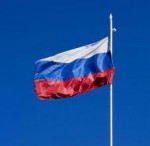June 12th 2011 is Day of Russia…
 June 12 is the national day of the Russian Federation – the Day of Russia. It has been celebrated every year since 1994. The First Congress of People’s Deputies of the Russian Federation adopted the Declaration on Russia’s National Sovereignty on June 12, 1990.
June 12 is the national day of the Russian Federation – the Day of Russia. It has been celebrated every year since 1994. The First Congress of People’s Deputies of the Russian Federation adopted the Declaration on Russia’s National Sovereignty on June 12, 1990.
The declaration views sovereignty as a natural and indispensable condition of the Russian state, with its centuries-long history, culture and traditions. The adoption of the declaration paved the way for the development of Russian statehood based on the principles of constitutional federalism, equality and partnership.
The idea of the declaration was born in the Democratic Russia movement, in which proponents of evolutionary market reform and strong statehood based on Russia’s national interests started opposing the Communist monopoly on power. In addition, by the late 1980s, society had begun to doubt the Politburo’s ability to carry out meaningful socioeconomic reforms.
The creation of the post of the President of the Russian Federation and the adoption of the new Russian Constitution reflecting the new political reality, along with the national flag, anthem and emblem of the Russian Federation, were major landmarks in the consolidation of Russian statehood. The country’s new name – the Russian Federation (Russia) – was adopted on December 25, 1991. The day when the declaration was adopted – June 12 – was proclaimed Russia’s national holiday by the Russian President’s decree of June 2, 1994. Under the presidential decree of June 16, 1998, it was called the Day of Russia. In 2002, the new Labor Code gave official seal to this title.
Also on June 12, 1991, the first Russian president was chosen in nationwide free elections by secret ballot. A total of 106,484,518 people were on the voting lists on Election Day, and 79,498,240 of them, or 74.66%, took part in the voting. Boris Yeltsin won with 57.3% of all votes. Nikolai Ryzhkov received 16.85%, Vladimir Zhirinovsky 7.81%, Aman Tuleyev 6.81%, Albert Makashov 3.74%, Vadim Bakatin 3.42%, and none-of-the-above 1.92%.
At the first Congress of People’s Deputies on May 29, 1990, Yeltsin was elected Chairman of the Supreme Soviet of the Russian Federation with the support of the Democratic Russia bloc. He occupied this position until June 1991. At the 28th Communist Party Congress on July 12, 1990, Yeltsin left the Communist Party. As president, Yeltsin also chaired the Constitutional Commission of the Russian Federation, the Extraordinary Food Commission and the Supreme Consultative and Coordinating Council. From November 1991 to May 1993 he headed the Russian Government. On July 3, 1996, he was re-elected for a second term. Source: http://en.rian.ru/symbols/20070608/66883669.html
Windows to Russia!
